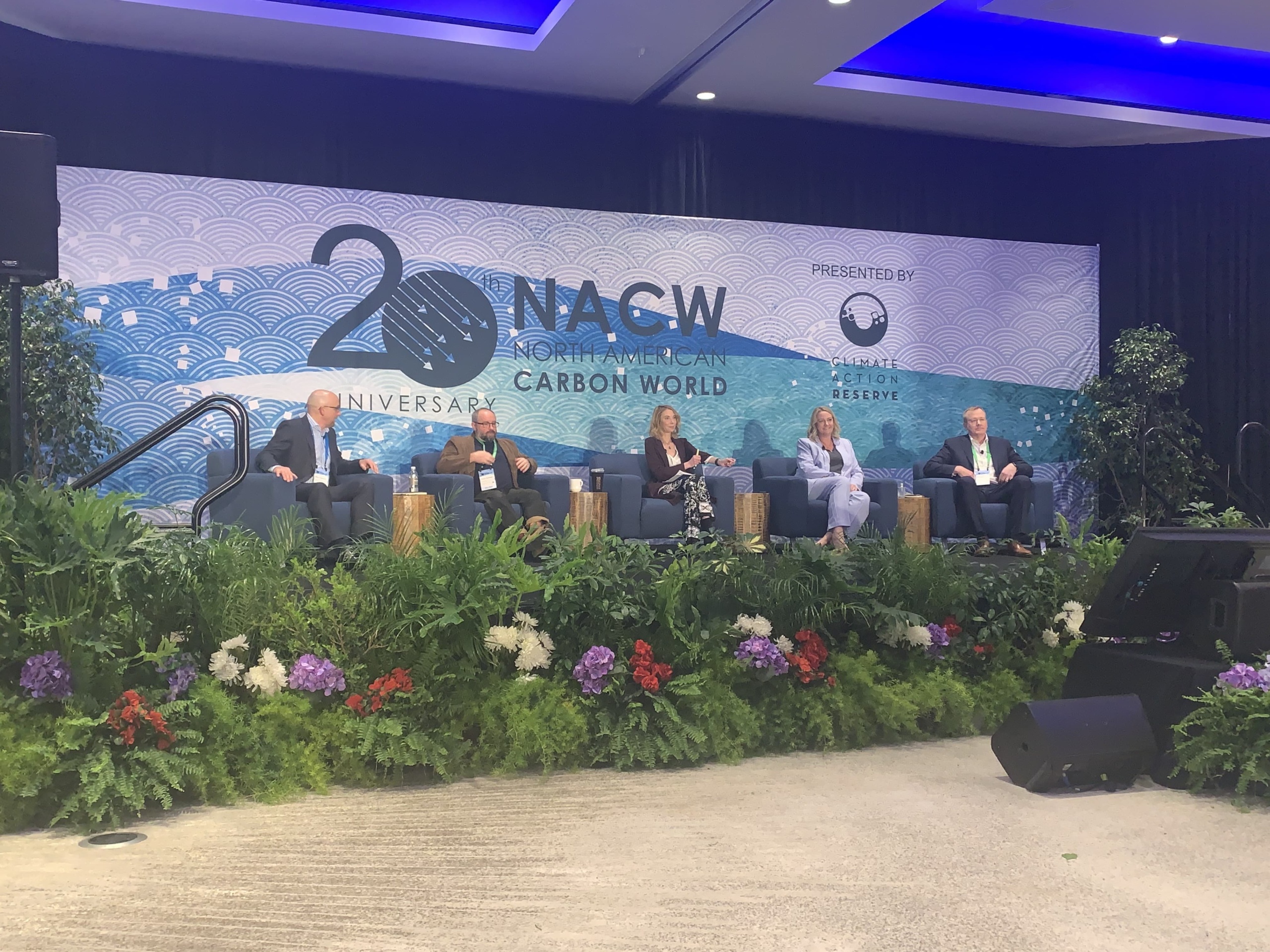In late March, I had the pleasure of joining my colleagues and peers at the 20th anniversary of North America Carbon World (NACW) in Anaheim, California. Yes, I said the same thing – “Twenty years – wow!”. NACW is one of the premier events for all things carbon, and one that I look forward to each year. The three-day conference is dedicated to the North American carbon market and climate policies, and time and time again proves to be a terrific place to learn, collaborate, and network.
After having a chance to debrief with the 3Degrees team that attended, we realized that three topics seemed to be a common theme throughout NACW.
- Guidance for the voluntary carbon market (VCM)
- Value chain mitigation – aka insetting
- And of course, carbon removals
The voluntary carbon market may see more stringent requirements in the coming years…maybe.
Popular discussions around NACW were “What will happen to the VCM in the near future?”, “Will we soon see more stringent requirements for developers?”, “Are we headed for regulation?”, and “What will the pending guidelines from some of the largest standards parties soon tell us?”
The Integrity Council for the Voluntary Carbon Market (IC-VCM) actually teased that they will be launching their latest Core Carbon Principles (CCP) at the conference, creating even more chatter.
The VCM has seen unprecedented growth over the past few years, so proposed efforts have been amplified to ensure the market is fully equipped to mitigate risk for all players – sellers and buyers alike.
We were fortunate to snag a seat at a panel discussion with some of the key parties leading the way for these measures, including the IC-VCM, The International Emissions Trading Association (IETA), and the Carbon Credit Quality Initiative (CCQI), among others. While it seemed that most panel members were against full regulation, there was a direct call for transparency and integrity in the market. We are now also facing a perceived risk around carbon credits from buyers that will need to be addressed across the board. While initiatives like Net Zero are helping to shape a quasi-compliance-driven market, there will need to be more focus on quality from both a project and methodology standpoint.
We expect this to be a continued topic of discussion as guidelines are released.
To inset or not to inset?
Throughout the conference, the term “insetting” emerged as a buzzword during many keynotes and panel discussions I attended. Although insetting is ill-defined and lacks a standardized definition in the market, it generally refers to actions from companies that reduce emissions within their value chains, including, in some cases, through the purchase of carbon credits. Over the past few years, there has been a renewed focus on how insetting and value chain interventions can play a role in achieving corporate climate goals.
While some proponents proclaim insetting as key for organizations looking for long-standing reduction strategies, it’s still unclear how the Greenhouse Gas (GHG) Protocol will treat insetting and what types of data will be required to reflect an action in your greenhouse gas inventory.
Organizations such as the Value Change Initiative (VCI) are stepping in to help companies define and implement value chain emissions reduction or removal strategies, resulting in adjusted emissions factors for affected products and services.
Verra is also preparing to launch a scope 3 program later this year to support the robust and consistent accounting of value chain interventions, prevent emissions reductions and removals from being double-counted, as well as establish flexible pathways for companies to engage in value chain interventions to incentivize greater climate action.
There was a unifying understanding that insetting will play a critical role in the development of the VCM and will likely be an increasingly key component of corporate scope 3 strategies.
Carbon removals – high demand, low supply.
We were not surprised that carbon removals would be another trending topic at NACW, as it has been at most conferences in the past few years.
It has become abundantly clear that carbon removals will be the future of carbon offset projects — the problem though is simple: supply and demand.
Recently, SBTi indicated that only removals will be counted to reach Net Zero goals under their initiative, which understandably created a heightened sense of urgency to procure and develop these credits. On the project side of the market, last year only 3% of projects that sold credits into the VCM were pure removals, and only 13% of projects were both partial reduction and removals.
As expected, the limited supply keeps removal prices at a point significantly higher than reduction credits, making them unattainable for some organizations. This however should change over time as new technologies and methodologies are emerging daily to help bring new removal credits to the market, including biochar, sustainable concrete, and direct air capture.
Many experts throughout the conference have even concluded that without the deployment at scale of Carbon Capture, Utilization, and Storage (CCUS) and Direct Air Capture (DAC) technologies the world will not be able to hit our 1.5°C target.
Parting thoughts from NACW
As expected, the entire 3Degrees team returned from the conference with a renewed enthusiasm for, not only the carbon market, but the meaningful work we get to do daily. While there are clear cries for guidance from buyers and developers alike, the VCM is stronger than ever, and I cannot wait to see what the future holds for our industry. See you next year, NACW!
P.S. If you were keeping up at home, that’s a total of fifteen acronyms.




